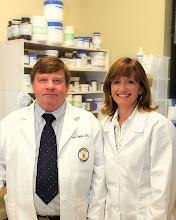What are the causes of wrinkles? The number one cause is the sun, the source of energy for all of life on earth, the object of worship of ancient religions. As much as we need the sun, we need to protect ourselves from its ultraviolet rays. Presently, the only known benefit from UV light on the skin is the conversion of pre-vitamin D to D3. Vitamin D has long been known as the Vitamin to cure rickets, but today it is known to do so much more than that. Vitamin D controls the absorption of calcium to build stronger bones and teeth, and Vitamin D helps maintain muscle strength. Clearly, there are benefits from the sun but the detrimental effects to our body outweigh these benefits. Wearing sunscreen may increase your concern about receiving enough Vitamin D. Choosing a supplement containing D3 is all that is needed to allay those fears. Wearing a sunscreen with broad spectrum protection against both UVA and UVB rays is the most important tool in the fight against aging skin and against skin cancer. According to the Sun Safety Alliance, a child born in 2000 has a 1 in 75 chance of developing skin cancer in his or her lifetime. Approximately 70 percent of American adults do not use sun-protective measures. Ratings on sunscreens should be changing soon showing both the UVB rating which is what we see now and also the UVA rating. The UVB rays are the burning rays and UVA rays are the aging rays so a UVA rating would be very beneficial to the consumer. Currently, the sunscreen manufacturers have temporarily postponed the passing of this new FDA labeling requirement due to the increased cost associated with changing all of their labels and the testing required to prove the UVA rating. The consumer should benefit greatly when this new requirement is passed.
What Sun Protection Factor (SPF) rating should you use? Well, that depends on your skin type and how much actual sunscreen you are applying. Most of us use about half the amount of sunscreen required to produce the SPF rating of the sunscreen. You should use about one tablespoon of sunscreen on your face alone. How many of us use that much? Your body requires about one and one half fluid ounces or about a jigger's worth of sunscreen. Since most of us do not use the appropriate amount, either use more or choose a higher rating to get the best coverage. Sunscreen should be applied every 2 hours or immediately after swimming or perspiring. Oh, just a note for menopausal women, your skin is especially susceptible to the sun. As you age, the natural protection from the sun produced in our bodies decreases so using a sunscreen is even more crucial.
Sunscreens containing Titanium Dioxide or Zinc Oxide are sun blockers and considered broad spectrum protecting against UVA and UVB rays. They reflect the sunlight away from the skin, but many people find them undesirable to use because of a white residue that is typically left on the skin, but the newer sunscreens that use Titanium Dioxide or Zinc Oxide have really improved this problem To be considered broad spectrum protection the concentration of either Titanium Dioxide or Zinc Oxide should be 7%. Both of these ingredients are considered to be very safe and effective.
Avobenzone (also known as Parsol 1789), Mexoryl, and Oxybenzone are chemical sunscreens that are considered effective for protection against UVA and UVB rays. They do not physically reflect sunlight, but they act chemically by absorbing the sun's rays before they cause damage and are considered sunscreens not sunblocks. Since Avobenzone degrades upon exposure to the sun, it is best used in combination with Oxybenzone better known as Helioplex. The addition of Oxybenzone allows the Avobenzone to remain stable thereby increasing its efficacy. The Helioplex combination creates a broad spectrum sunscreen. Mexoryl is not degraded by exposure to the sun, so it is more stable than Avobenzone and it absorbs both UVA and UVB rays. Becoming familiar with the ingredients in sunscreens allows the user to choose a sunscreen that will provide the best UV coverage. Ultimately, the use of a sunscreen is crucial to protect the skin from cancer causing rays as well as the first line of defense in the fight against aging.
It is never too late to use sunscreens. The consumer has many choices available when choosing a sunscreen. Finding the sunscreen that works with your skin type whether it is a foam, spray, gel, or cream that contains the ingredients that protect you from UVA and UVB rays is the most important product you can apply to your skin. Resolve to start a healthy skincare regimen today. Use sunscreen on a daily basis.
Wednesday, August 5, 2009
Effective Ingredients in Sunscreens
Labels:
anti-aging,
avobenzone,
sunscreens,
titanium dioxide,
wrinkles,
zinc oxide
Subscribe to:
Post Comments (Atom)


No comments:
Post a Comment